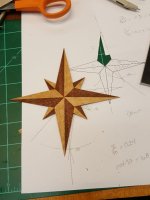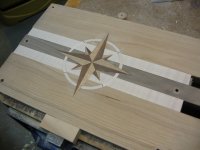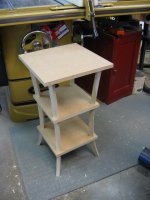[email protected]
New member
Several questions:
1) I would like to attempt to make shaded fan inlays. I believe I understand the general method to make them. I am going to apply them to a curved door which I would also like to veneer. Should I veneer the door first and then cut out for the inlay or cut the veneer and put the inlay into the veneer and then apply as one unit using veneer tape for example to hold it together?
2) If I don't want to use a router, what is the general technique for cutting the substrate (in this case solid wood) to receive an inlay? Do I cut the outer edge of the inlay simultaneously with the substrate and then use a very flat gouge to remove the wood for the inlay?
1) I would like to attempt to make shaded fan inlays. I believe I understand the general method to make them. I am going to apply them to a curved door which I would also like to veneer. Should I veneer the door first and then cut out for the inlay or cut the veneer and put the inlay into the veneer and then apply as one unit using veneer tape for example to hold it together?
2) If I don't want to use a router, what is the general technique for cutting the substrate (in this case solid wood) to receive an inlay? Do I cut the outer edge of the inlay simultaneously with the substrate and then use a very flat gouge to remove the wood for the inlay?



